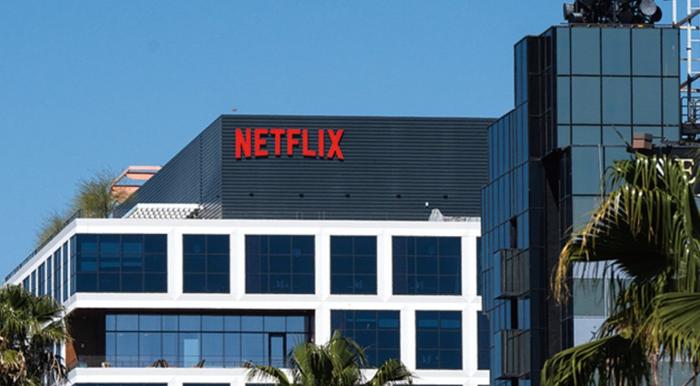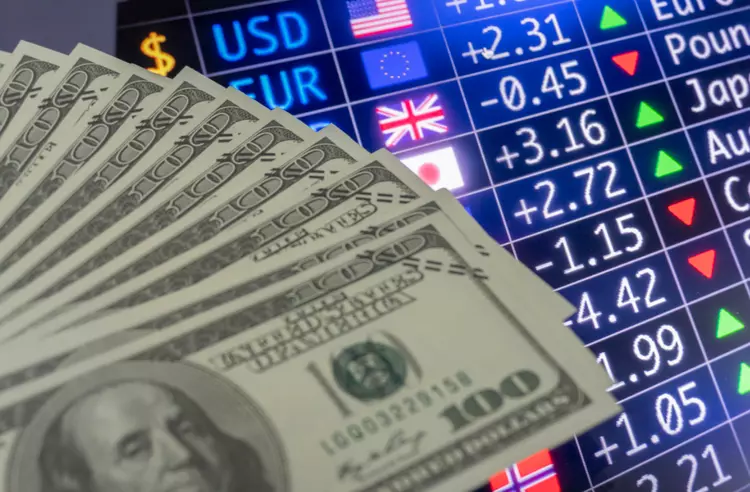Is the decline in US stocks just getting started?
Today, Marko Kolanovic, Chief Market Strategist at J.P. Morgan, stated that the recent three-week decline in the US stock market is just the beginning of a larger-scale sell-off. With the escalation of macroeconomic risks such as rising US bond yields, a stronger dollar, and increasing oil prices, the sell-off could intensify.
Meanwhile, strategists at Bank of America have also issued a warning, stating that there is a high risk for US tech giants to fulfill their promises in artificial intelligence amid the possibility of profit slowdown. The bank forecasts that although these companies’ first-quarter growth is still expected to be 39% higher than the same period last year, it is lower than the 63% growth seen in the last three months of 2023. The bank’s strategists predict that by the fourth quarter, the growth gap between the seven tech giants and other companies in the S&P 500 index may narrow, potentially leading to a shift of funds from tech stocks to value-oriented stocks.
This week, Tesla (TSLA), Meta (formerly Facebook), Microsoft (MSFT), and Google’s parent company Alphabet (GOOG) will all report their earnings. Last week, Wall Street expressed concerns about the upcoming earnings reports, with the tech-heavy Nasdaq falling 5.5% for the week, marking its largest weekly decline since November 2022. Analysts suggest that whether the sell-off in tech stocks will continue depends on the earnings reports of major tech companies.
Warnings from J.P. Morgan and Bank of America
On Monday local time, Marko Kolanovic, Chief Market Strategist at J.P. Morgan, stated in a report that although corporate earnings expected to be announced this week may temporarily stabilize the market, it does not mean that the stock market has overcome its difficulties.
Marko Kolanovic pointed out that factors such as complacency in market valuations, persistent high inflation, diminished expectations of a rate cut by the Federal Reserve, and overly optimistic profit expectations have intensified downside risks, and the future sell-off in US stocks may deepen further. Marko Kolanovic wrote, “Market corrections are typically defined as declines of 10% or more, and pullbacks may continue. Market concentration has been very high, with expanded positions, which is typically a danger signal with the risk of a reversal.”
Marko Kolanovic believes that recent trading patterns and the current market narrative are similar to those of last summer. At that time, unexpected inflation increases and the Fed’s monetary policy shift to hawkishness triggered declines in risk assets. However, unlike then, investors’ positions now appear to be even higher, which also means greater downside risk.
The strategist advises investors to remain defensive when the stock market looks “problematic.” In his model portfolio, defensive strategies include hedging risky assets with long-term volatility and exposure to commodities (excluding gold).
In addition, Marko Kolanovic also told clients that it is time to consider buying Japanese consumer-related stocks, as expected real wage growth is expected to stimulate personal consumption in Japan, boosting consumer stocks.
Marko Kolanovic and his team are among the few bearish contrarian investors on Wall Street this year. While most of their peers are raising their expectations for US stocks, these J.P. Morgan strategists generally remain pessimistic about stocks and risk assets, with their year-end target for the S&P 500 index at 4200, the lowest among major Wall Street banks. This target implies a decline of about 16% from Monday’s closing level for the S&P 500 index by the end of 2024.
Furthermore, on Monday local time, analysts at Bank of America also issued a warning, stating that there is a high risk for US tech giants to fulfill their promises in artificial intelligence amid the possibility of profit slowdown. Although these companies’ first-quarter growth is still expected to be 39% higher than the same period last year, it is lower than the 63% growth seen in the last three months of 2023.
Bank of America points out that companies in the S&P 500 index, excluding the seven tech giants, are expected to see a 4% year-on-year decline in earnings for the first quarter. However, according to Bank of America’s data, about 25% of stocks in the benchmark index are expected to achieve positive earnings growth and accelerate growth in the first quarter.
The bank’s strategists predict that by the fourth quarter, the growth gap between the seven tech giants and other companies in the S&P 500 index may narrow, potentially leading to a shift of funds from tech stocks to value-oriented stocks.
Market Disagreements Abound
However, analysts on Wall Street have widely differing views on US stocks.
UBS recently stated that the momentum of US tech giants is dissipating, as the sector’s previously enjoyed profit momentum faces cooling. Ahead of this week’s earnings releases, UBS downgraded its industry ratings for six major tech giants, including Google, Apple, Amazon, Meta, Microsoft, and Nvidia, from “overweight” to “neutral.” UBS expects the earnings growth of these six US tech stocks to slow down, with other tech stocks likely to outperform them by the end of this year.
On April 22, King Lip, Chief Strategist at Baker Avenue Wealth Management, stated that whether the sell-off in tech stocks will continue actually depends on the reports of major tech stocks. He said, “Since we’ve had a little bit of a correction, valuations are definitely more reasonable now.”
King Lip said, “The pullback was long overdue. I think this is just a regular adjustment at this point.” He has begun increasing stock exposure for clients and plans to buy more stocks as the stock market declines further. However, he believes that the S&P 500 index may decline by up to 10% from its high on March 28.
The stock strategy team led by Michael Wilson at Morgan Stanley stated that with the strengthening of the US economy, it is expected that US corporate profit growth rates in 2024 and 2025 will significantly improve. This is also a rare optimistic outlook for earnings per share by “big short” Michael Wilson since 2023. Regarding the latest outlook for US stock earnings, Michael Wilson emphasized that the rebound in US business activity survey data, supported by new order data, “confirms the sustained trend of future profit growth.”
In addition, Dan Ives, an analyst at the well-known investment firm Wedbush, stated that extensive field research has made the firm very confident in corporate AI spending and expects AI spending to account for approximately 10% of enterprise IT budgets this year, compared to less than 1% in 2023.
Dan Ives said that the profit environment for tech companies still looks strong, especially considering the fervor for artificial intelligence among major corporations, which has driven the surge in tech stocks over the past year. The strategist added that an incredibly strong earnings season could be the main positive catalyst for tech stocks, predicting a further 15% surge in the industry by the end of 2024.
A recent research report from CICC pointed out that the expectation for the postponement of a Fed rate cut is still brewing. Currently, the number of rate cuts implied by CME interest rate futures has been reduced to one, leading to continuous rises in the 10-year US Treasury yield and the dollar, approaching previous highs. This “fire” finally “burned” to US stocks last week, with the S&P 500 index falling 3.1% last week, and the Nasdaq index plummeting 5.5%, attracting market attention. CICC said, “We are not surprised by this. On the one hand, the decline in US stocks has its ‘inevitability,’ and on the other hand, the decline in US stocks at this level is not a bad thing. It not only can digest its overly strong expectations but also helps restart rate-cutting trades, thereby laying the foundation for subsequent rebounds.”
Gloomy Outlook for Tesla
On April 22, Tesla’s stock price fell by 3.4%, marking the seventh consecutive trading day of decline and further reducing its market capitalization to $452.4 billion. Since the beginning of this year, Tesla’s stock price has cumulatively fallen by 43%, evaporating $339 billion in market value, equivalent to about 24.6 trillion yuan.
After-market trading on April 23, Tesla will report its first-quarter earnings. Wall Street expects Tesla to face its worst quarter in seven years, with the first-quarter gross margin expected to hit its lowest level since early 2017. According to a survey of 20 analysts by data analysis platform Visible Alpha, Wall Street expects Tesla’s automotive gross margin, excluding regulatory credits, to be 15.2%, down from 19% in the same period last year, the lowest since the fourth quarter of 2017.
In addition, according to Bloomberg’s widespread estimates, Tesla’s adjusted earnings per share for the first quarter are expected to be $0.52, with the highest revenue reaching $22.31 billion. This will be the first revenue decline for the company in four years. In terms of profitability, Tesla is expected to achieve a operating profit of $1.49 billion in the first quarter, a 40% decrease from a year ago. In terms of non-GAAP indicators, Wall Street expects adjusted net income to be $1.79 billion and adjusted EBITDA to be $3.32 billion.
Currently, Tesla’s sales growth is slowing, and it is expected to have a significant impact on Tuesday’s earnings. Earlier this month, data disclosed by Tesla showed that it delivered 386,800 vehicles in the first quarter, an 8.5% decrease from the same period last year, while inventory increased.
This weekend, Tesla announced price cuts for its Model 3, Model Y, and other models worldwide, further eroding profits. Several analysts expect Tesla’s annual deliveries to decline for the first time in 2024 after years of double-digit growth. Tesla warned in January that growth in deliveries this year would “significantly decrease,” indicating that price cuts were not enough to boost demand.
Last week, the electric car maker announced layoffs of more than 10%, and on the same day, Drew Baglino, Senior Vice President of Tesla Powertrain and Energy Engineering, and Rohan Patel, Vice President of Public Policy and Business Development, announced their resignations. Analysts said Tesla’s layoffs were directly related to the company’s “Waterloo” in the first quarter of 2024 as automotive sales faltered.
John Murphy, an analyst at Bank of America, wrote in a report, “Sentiment towards Tesla has worsened since the end of 2023.” Recently, more than 10 institutions, including Goldman Sachs, Morgan Stanley, and Deutsche Bank, downgraded their 12-month target prices for Tesla.
Among them, Deutsche Bank downgraded Tesla’s rating from “buy” to “hold” and lowered its target price from $189 to $123. The bank pointed out that the launch of the low-cost car Model 2 is likely to be delayed, and the company’s strategic focus has shifted to the robotaxi business, which is considered to have management risks and requires several years.
Overall, the divergence in Wall Street’s views on US stocks, especially in the tech sector, underscores the uncertainty and volatility currently prevailing in the market. Investors are closely monitoring earnings reports and macroeconomic indicators for clues about the future direction of the stock market.
With concerns about profit growth, inflation, interest rates, and geopolitical tensions lingering, investors face a challenging environment characterized by heightened risk and increased market turbulence. As the situation evolves, market participants must remain vigilant and adapt their strategies accordingly to navigate through these uncertain times.



